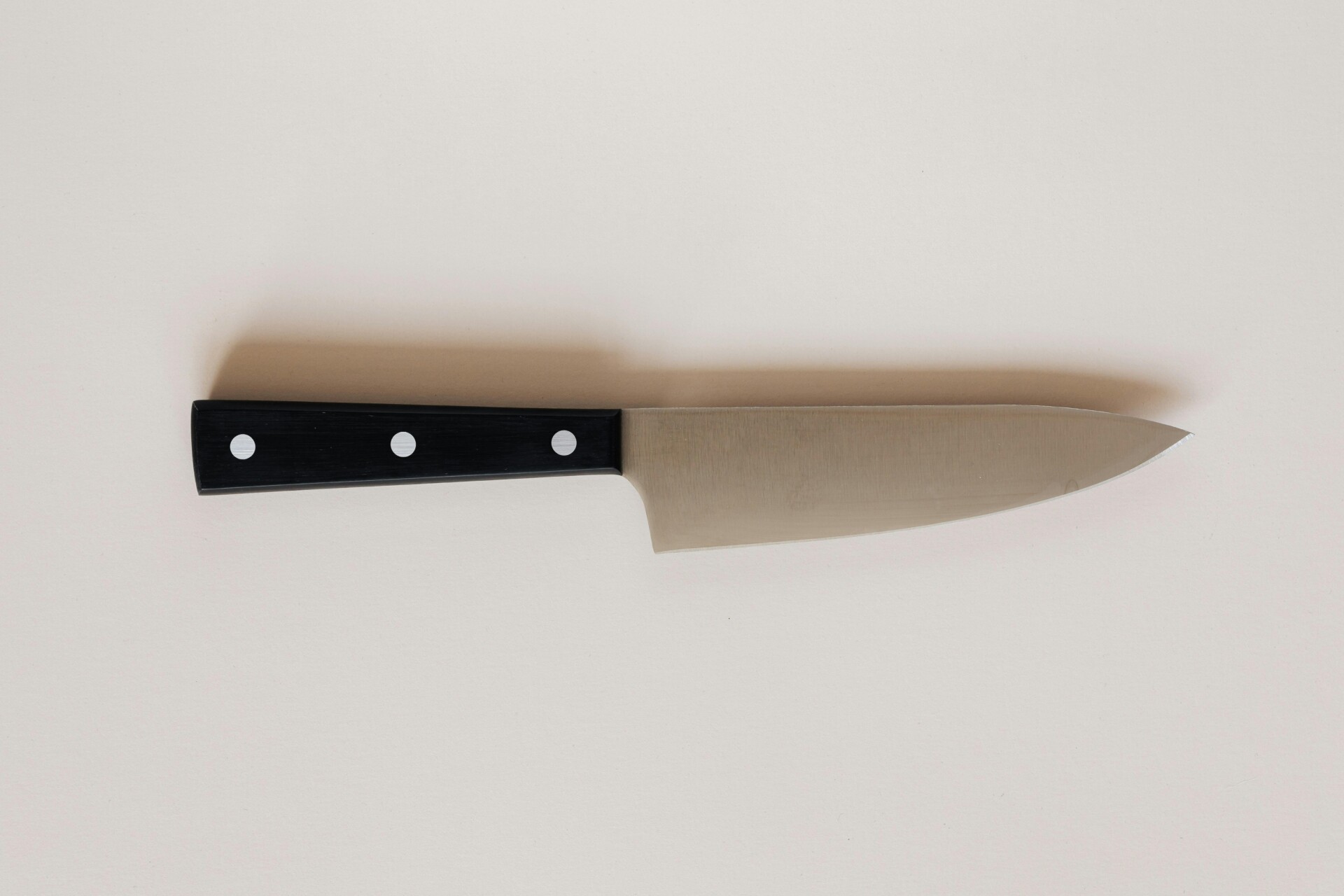Welcome to the third instalment of the series Ancient Composite Armor by Jake Ganor. Click here to read part I and part II of his wonderfully informative exploration!
What Have We Gone Over?
In previous articles, we reviewed the Greek linothorax and the paper armor of Ancient China. It remains an open question whether or not those types of armor were composites, though it is beginning to look doubtful. This leads us to a broader question: Can resin actually enhance armor’s protective capabilities against weapons like spears, crossbow bolts, and swords? This is a question that an analysis of modern armor can answer definitively.
Both the U.S. National Institute of Justice (NIJ) and the European VPAM organization provide specifications for stab-resistant armor, with each setting varying threat levels to evaluate protective gear. Both describe two types of threat – knife and spike – and several different impact energy levels.
Knife and Spike Threats: Understanding the Challenges
In both specifications, the “spike” threat is intended to simulate improvised prison weapons. It’s softer and duller than the knife, and it lacks an edge, so it’s unable to cut fibers upon impact. Ultimately, it’s much easier to stop than the knife.
As for energy levels: The NIJ’s highest-energy knife standard, designated Knife-3, tests an armor sample positioned over a clay or similar backer by subjecting it to an impact with a sharp knife at an energy level of 64 Joules. VPAM’s Knife-4 standard pushes the limits further, requiring that armor withstand a strike at an impact energy of 80 Joules. Interestingly, these force levels are much akin to the conditions simulated in Gregory Aldrete’s reconstruction experiments with reconstructed linen armor samples, which were conducted with arrows impacting at around 60 Joules.
With all that said, the archetypical woven fabric for modern armor is aramid, also known as Kevlar, Twaron, and by other brand names. Does resin improve Kevlar’s performance against ballistic threats? As a general rule, no, it reduces it.
In “experimental analysis of puncture resistance of aramid laminates on styrene-butadiene-styrene and epoxy resin matrix for ballistic applications” Pach et al. examined the ballistic resistance of raw woven kevlar laminate, a SBS resin-infused laminate composite, and an epoxy-infused laminate composite. Layer count was kept constant. The raw kevlar laminate performed best by a wide margin – being both the lightest, without resin weight, and the most resistant to perforation. The SBS composite, more flexible than the epoxy composite, also performed reasonably well, with the epoxy composite falling quite far behind them both.
The Mechanism of Fiber Deformation in Textile Armor
Pach et al. also examined the impact resistance of those composites, by hitting them with a small drop weight – 9mm in diameter – at 60J. Here again the raw woven laminate performed best. Both of the resin-infused samples were more likely to fail, and fail at lower energy levels. The raw sample, more flexible, more able to displace itself in the face of impact, again performed best.
We can also see from a simple analysis of the ACH helmet that Kevlar-resin composites perform worse against ballistic threats than Kevlar alone. The ACH is more than 7mm thick, and is rated to approximately NIJ II. Even before the ACH was developed, standalone Level IIIA soft armor panels were rarely much more than 6mm thick, often as low as 5mm, and were far lighter on account of their lack of resin. The old Second Chance Summit IIIA vest, for instance, is quilted woven aramid at a 6.2mm thickness – much thinner than the ACH or PASGT, and rated to a higher level.
Mechanistically, this is because fiber stretching and deformation is one way by which textile armor materials absorb and dissipate energy. By binding them in resin, one limits their capacity to stretch and deform, thereby restricting their maximal capacity for energy absorption. And the stiffer the resin, the more severe the restriction.
Ancient Organic Resins: A Question of Quality
But that’s against bullets. Against knife and spike threats, the picture is less clear. The spike and stab resistance of neat aramid vs. resin-infused aramid composites was investigated in “stab resisting behavior of polymeric resin reinforced p-aramid fabrics” by Kim and Nam – and in various other papers. Due to differences in resin systems and test methodologies, it’s not possible to make strong statements one way or the other, but it appears that certain resins can improve overall anti-stab performance, even on a weight basis, whereas certain other resins do not improve performance, and poor resins certainly degrade performance.
This brings us to our core point: As only the best resins appear to improve performance, and as the Ancients likely had very poor organic resins to work with, it’s wildly implausible that adding organic resin to a quilted fabric laminate would improve the performance of that laminate as an armor material.
This is an inference; it has never been tested, so I write “implausible” rather than making a definitive statement. A proper test would need to (1) compare resin-infused samples to properly layered and quilted samples with reasonably high thickness and cross-stitching density, as reflected in many museum examples of quilted armor; (2) consider the influence of resin weight; and (3) note the very poor quality of the organic resins available in ancient times. Under all three conditions, it is indeed very implausible that the resin would improve rather than degrade performance.
Alternative Materials in Modern Stab-Resistant Gear
Even today, with certain resins proven to improve performance, composite materials are clearly not the material of choice in anti-knife armor systems. The most commonly employed materials are polycarbonate, aluminum, steel, and titanium. These metals and polymers are configured in a variety of ways – sometimes as solid plates, sometimes in flexible forms such as chainmail, lamellar strips, or even scale mail.
There are aramid solutions for stab protection. These are typically heavy (high denier) and closely-woven fabrics. They are never used in composite form, but only in multi-ply panels that are sometimes, but not always, quilted. Examples of this material include Twaron Microflex, and an example vest is the “Trident Series” here below:
This “Trident Series” panel – made up of 14 layers of Microflex, apparently unquilted, with taped edges to hold its layers in place – is only spike-rated, and carries no knife rating. Against the knife threat, with its fiber-slicing edge, metal armor is more efficient and still preferred. Against spikes, layered textile materials, much like that panel, have become most popular. Nowhere does the fiber-resin composite have a clear performance advantage – in many cases, the resin affects performance in a negative way – and composite materials are decidedly unpopular in modern stabproofing.
In the distant past, with only organic glues of dismal quality on hand, I must emphasize that there’s virtually no chance that a fabric-resin composite would offer better performance than a well-quilted fabric panel.
But there is another reason the ancients might have used resin. We’ll discuss this in the next and final post in this series.













